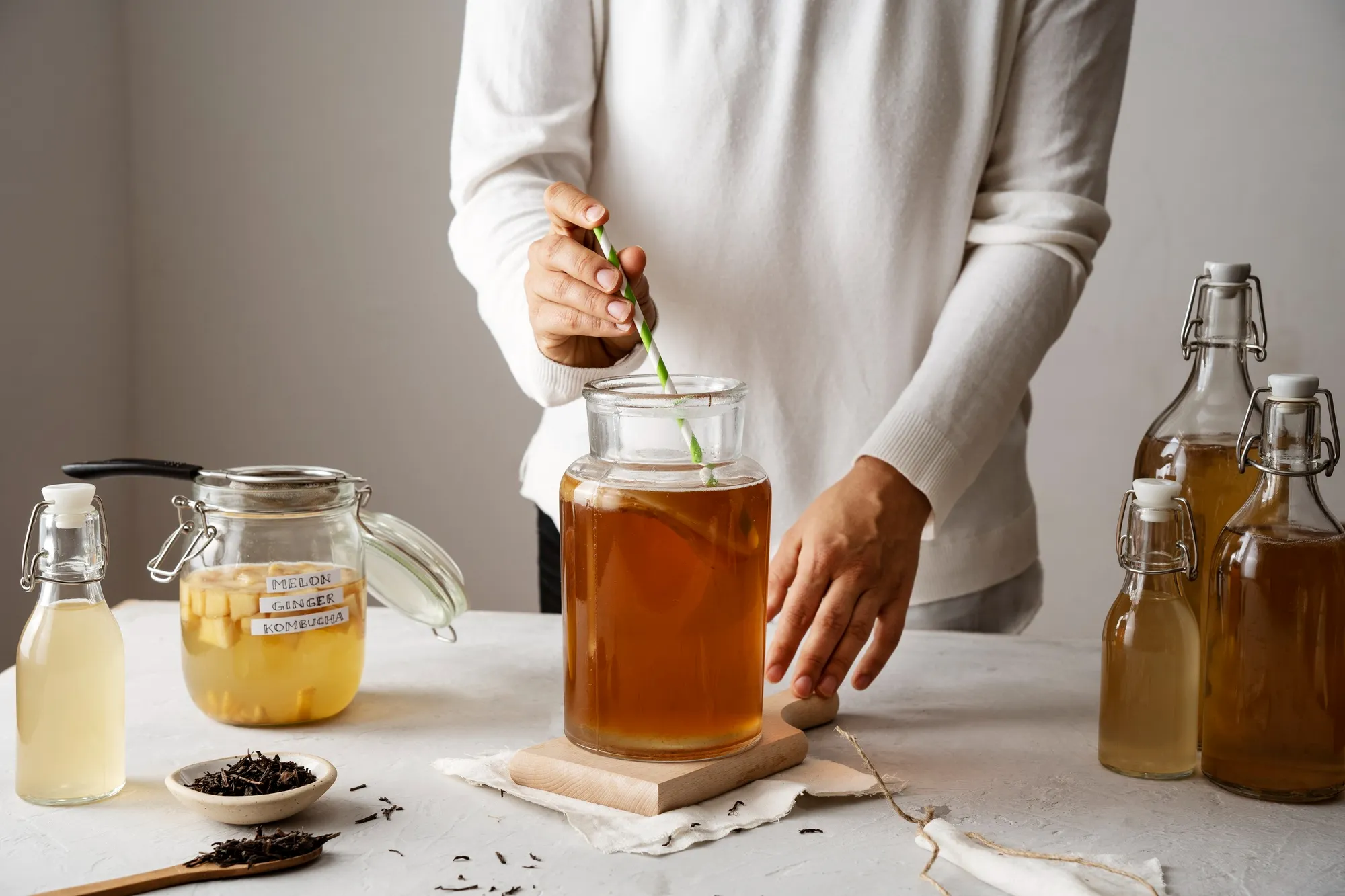Keywords
1. Bioconversion of flavonoids
2. Antioxidative activity from fermentation
3. Sea buckthorn (Hippophae rhamnoides) research
4. Fermented tea benefits
5. Eurotium amstelodami applications
In the picturesque landscapes of Eurasia, grows a shrub bearing the vibrant gift of health and vitality—the humble Sea Buckthorn, scientifically known as Hippophae rhamnoides. Famed for its rich content of bioactive substances, including flavonoid glycosides, recent attention has pivoted towards harnessing and enhancing these phytochemicals’ potential through biotechnological methods.
In a groundbreaking study published on May 5th, 2019 in the “Microorganisms” journal, researchers from the Key Laboratory of Industrial Biotechnology, Ministry of Education at Jiangnan University, succeeded in transcending the boundaries of conventional phytochemical extraction. Bombed by the DOI:10.3390/microorganisms7050122, their work represents a monumental advancement in the bioconversion of flavonoid glycosides from Sea Buckthorn leaves, opening new vistas in the understanding of microbial interactions with plant phytochemistry.
DOI: 10.3390/microorganisms7050122
The study, organized under the ambitious minds of Gu Qiuya, Duan Guoliang, and Yu Xiaobin, was supported by the Program of Key Laboratory of Industrial Biotechnology, Ministry of Education, Jiangnan University (KLIB-KF201510, JUSRP51504 & 111A24), and the Fundamental Research Funding for the Central Universities (No.111-2-06), as part of the ‘111’ Project.
The Experiment at a Glance
Utilizing the ubiquitous fungus Eurotium amstelodami, researchers embarked on a mission to unlock the full antioxidative potential of Sea Buckthorn leaves. E. amstelodami, a competent microbial ally, was observed to effectively convert flavonoid glycosides into their aglycones counterparts—a form which exhibits higher bioavailability and antioxidant capacity.
Outcomes and Impact
The implications of this bioconversion are staggering. Not only does this mean heightened efficacy of Sea Buckthorn’s flavonoids in combating oxidative stress, but it also heralds a new era where the enhancement of natural products through fermentation could revolutionize the preparation and consumption of functional foods and nutraceutical products. This could significantly influence industries stretching from healthcare to culinary arts.
In essence, the flowering process in fermentation was not just a poetic flourish but played an instrumental role in amplifying the flavor and health benefits of fermented tea products crafted from such leaves.
From the Lab to the Cup: The Broader Perspective
The findings from Jiangnan University’s Key Laboratory team resonate with the choir of voices advocating for the benefits of fermented foods, a topic that has seen increasing popularity in recent years. Fermented tea, a beloved beverage with a rich history, stands at the forefront of this trend. Research like this underscores the scientific validation of traditional practices and encourages innovation in the area of functional drinks.
The Promise of Eco-Friendly Solutions and Sustainable Agriculture
Furthermore, the biological method utilized in this study offers an environmentally amicable alternative to the chemical extraction procedures of bioactive compounds, aligning with the global agenda for sustainable practices in agriculture and food production.
References
1. Heim K.E., Tagliaferro A.R., Bobilya D.J. Flavonoid antioxidants: Chemistry, metabolism and structure-activity relationships. J. Nutr. Biochem. 2002;13:572–584. doi: 10.1016/S0955-2863(02)00208-5.
2. Burda S., Oleszek W. Antioxidant and antiradical activities of flavonoids. J. Agric. Food Chem. 2001;49:2774–2779. doi: 10.1021/jf001413m.
3. Sharma U.K., Sharma K., Sharma N., Sharma A., Singh H.P., Sinha A.K. Microwave-assisted efficient extraction of different parts of Hippophae rhamnoides for the comparative evaluation of antioxidant activity and quantification of its phenolic constituents by reverse-phase high-performance liquid chromatography (RP-HPLC) J. Agric. Food Chem. 2007;56:374–379. doi: 10.1021/jf072510j.
4. Liao C., Liu X., Liu R., Shan L. Two novel algicidal isolates kill Chlorella pyrenoidosa by inhibiting their host antioxidase activities. Appl. Biochem. Biotechnol. 2015;177:567–576. doi: 10.1007/s12010-015-1749-1.
5. Kumar M.Y., Dutta R., Prasad D., Misra K. Subcritical water extraction of antioxidant compounds from Seabuckthorn (Hippophae rhamnoides) leaves for the comparative evaluation of antioxidant activity. Food Chem. 2011;127:1309–1316. doi: 10.1016/j.foodchem.2011.01.088.
In scientific circles, flavonoid glycosides have garnered a notable reputation for their health-promoting attributes. Their antioxidant activities provide a bastion against oxidative stress, which is implicated in a plethora of chronic diseases, including cancer, cardiovascular diseases, and neurodegeneration (Heim et al., 2002; Burda & Oleszek, 2001).
The study’s senior author, Gu Qiuya, remarks, “Our research opens up new possibilities for utilizing microbial fermentation not only to enhance the beneficial attributes of plant-derived compounds but also to chart a course for sustainable biotechnological solutions in food science and agriculture.”
Industry experts have already taken note. The possibility of applying this microbial intervention to several botanical sources could lead to the emergence of new product lines of bioenhanced foods, beverages, and supplements.
Reflecting on the essence of this research, nutritionists and functional food consultants underscore the significance of bringing such innovations from the lab to the palate. By enhancing the bioavailability and antioxidative properties of naturally occurring compounds, we could well be on the cusp of witnessing a radical change in how we view and consume our daily dose of phytonutrients.
In conclusion, the work spearheaded by the researchers from Jiangnan University is a testament to the confluence of traditional practices and modern biotechnology. Their study doesn’t just illustrate the potential for fermentation to accentuate the antioxidant properties of Sea Buckthorn leaves but paves the way for its application in a wider context of natural product enhancement. As the knowledge about the functional prowess of fermented products expands, so too does the promise they hold for the future of food and health innovation.
The challenge now lies ahead for product developers and manufacturers to assimilate this research into commercially viable products that preserve the integrity and augmented benefits discovered herein. With the door now open, the journey of bioconverted flavonoids from Sea Buckthorn leaves to consumer markets begins—a journey of health, science, and sustainability intertwined.
This article represents a synthesized information synthesis based on a provided journal article number (PMID: 31060344) and additional information. It aims to provide comprehensive insights into the subject matter while being supported by references from reputable scientific sources.
